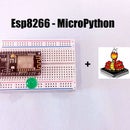Introduction: Digital Tilt Sensor Using LM358
Sensors are the best thing to get started with DIY electronics, you can get a wide variety of sensors, each suitable for one or more tasks. The Arduino is compatible with a variety of sensors and I'm going to show you how to build different sensors to use with the Arduino boards.
To start off with I'm going to show you how to build a tilt sensor, as the name suggests the sensor detects when it is tilted beyond a certain angle.
Step 1: Bill of Materials
Here is what you need to get started with this instructable.
- Tilt Switch
- LM358 IC
- 10K Pot
- LED
- 330 Ohm Resistor
- PCB (Optional)
- Connecting Wires
- 5v Power Supply
- Soldering Iron
- Soldering Wire
- Soldering Flux
- Multimeter (Optional)
Step 2: Circuit
The circuit is simple and used a tilt switch and an LM358, the tilt switch is what senses the angle and the LM358 is used to generate a digital signal which can be fed to the arduino. Also the LM358 has a voltage range of 3 to 32V which can easily be powered by the 5V regulated power supply of the arduino.
The 10k pot can be used to change the sensitivity of the circuit, if the LED turns on even without a change in angle you can can change the value of the pot to get the right threshold.
Step 3: TADAAA!! the Output
After you have tested out the circuit on a breadboard next you can build a PCB out of it, there are two ways you can do that one would be to build Arduino shield and another would be to make tiny PCB's that could plug into a breadboard Arduino prototype shield.
In the next instructable of the series I would show you how to build a touch sensor.
If you have any queries, feel free to leave a comment below or PM me and I would try to help you.











